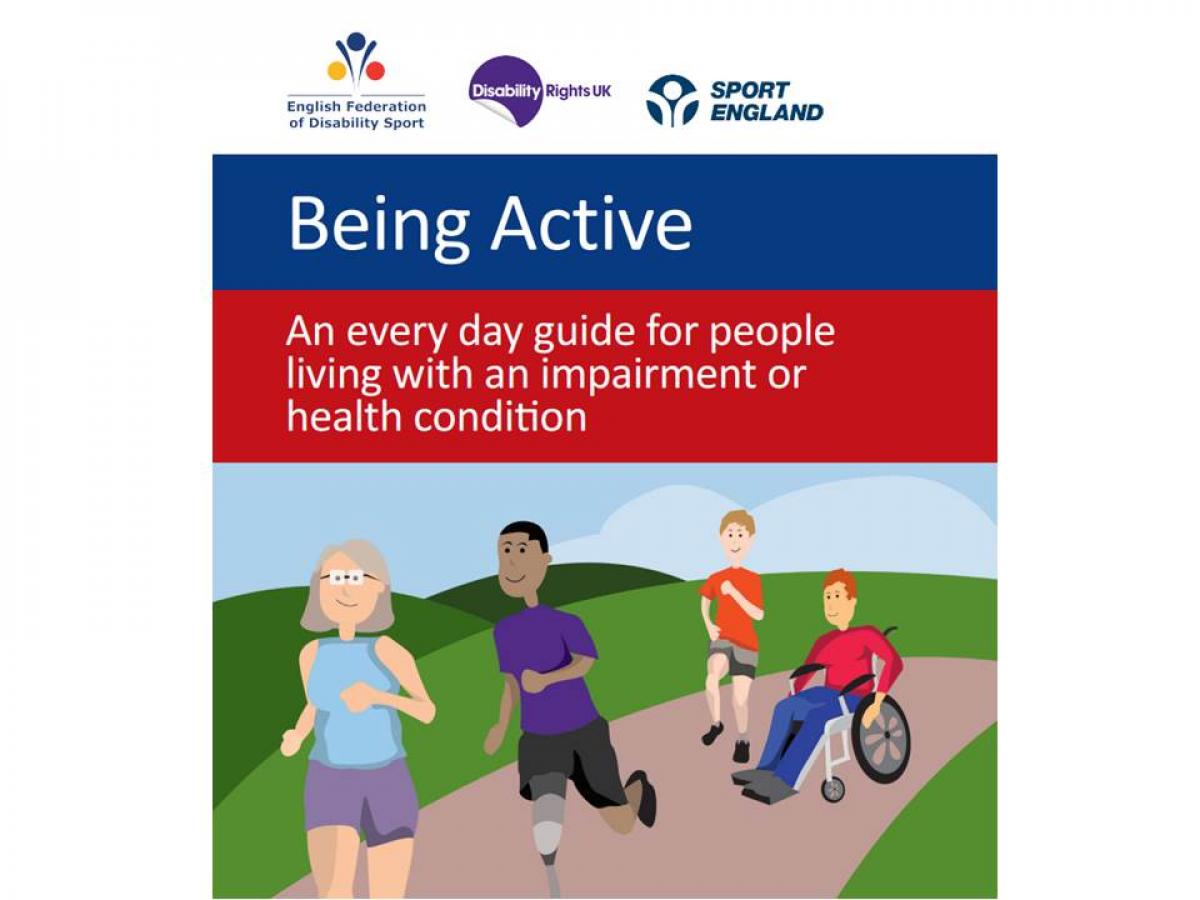“Being Active” guide supports people to enjoy a more active lifestyle
Published ahead of the International Day of Disabled People, the guide aims to get more people with an impairment in England active. 02 Dec 2014
The being Active in the UK guide supports more English people with an impairment to enjoy an active lifestyle.
"We’re proud to release Being Active in time for such a notable day for disabled people. Inactive disabled people have individual reasons why their experiences have meant they have stopped doing, do not want to or feel they can not access sport or physical activity."
A new guide released ahead of the United Nations International Day for Disabled People on 3 December supports more English people with an impairment to enjoy an active lifestyle.
“Being Active”, unveiled by the English Federation of Disability Sport in partnership with Disability Rights UK, aims to improve the number of people with an impairement choosing to lead an active lifestyle by providing access to relevant information, so they have control over where, what and how they can start being active.
Research shows that most people with an impairment are not as active as they would like to be. According to Sport England’s Active People Survey four out of five people with an impairment take little or no exercise. But that is not because they do not want to be active. In the English Federation of Disability Sport (EFDS) Lifestyle Report released in 2013, it found that seven in 10 people want to increase their physical activity.
Disability Rights UK teamed up with EFDS to ensure the guide reaches more people across the country. In the concise, reader-friendly publication, it gives a feel for the endless choices available when thinking about the possibilities.
Chris Ratcliffe, EFDS’s Director of Development, said: “We’re proud to release Being Active in time for such a notable day for disabled people. Inactive disabled people have individual reasons why their experiences have meant they have stopped doing, do not want to or feel they can not access sport or physical activity. This guide is fantastic because it doesn’t supply endless pages of links, opportunities or reasons why disabled people should be active. It provides a range of ideas and tips for leading a healthier lifestyle.”
Barry Horne, EFDS’s Chief Executive, said: “Being Active is a brilliant starting point for many disabled people. We have used our own insight from studies, like the recent Talk to Me report, and called upon those experts in the disability sector, to address the real life barriers that many disabled people experience when thinking about sport or exercise. Then, worked together to provide realistic ideas.”
Liz Sayce, Disability Right UK’s Chief Executive, said: “Disability Rights UK is delighted to be part of this initiative to let more and more people living with disability or health conditions know their rights to be active. There are lots of opportunities and we think disabled people should have an equal change to take them up. This guide should help and we will be disseminating it widely.”
Lisa O’Keefe, Sport England’s Director of Insight, said: “We are aware that four in five people disabled people take little or no exercise, however we understand there is latent demand for disabled people to play sport. Sport England are involved in many different projects to attract more disabled people to play sport more often, and we will continue that work hard so that the imbalance of disabled and non-disabled people in this area is significantly reduced.
“The publication of the ‘Being Active’ guide will hopefully give disabled people interested in being more active information and advice to help get them started.”
The Being Active guide is available in accessible PDF and EasyRead formats.

 Facebook
Facebook
 Instagram
Instagram
 Twitter
Twitter
 Youtube
Youtube
 TikTok
TikTok
 Newsletter Subscribe
Newsletter Subscribe




